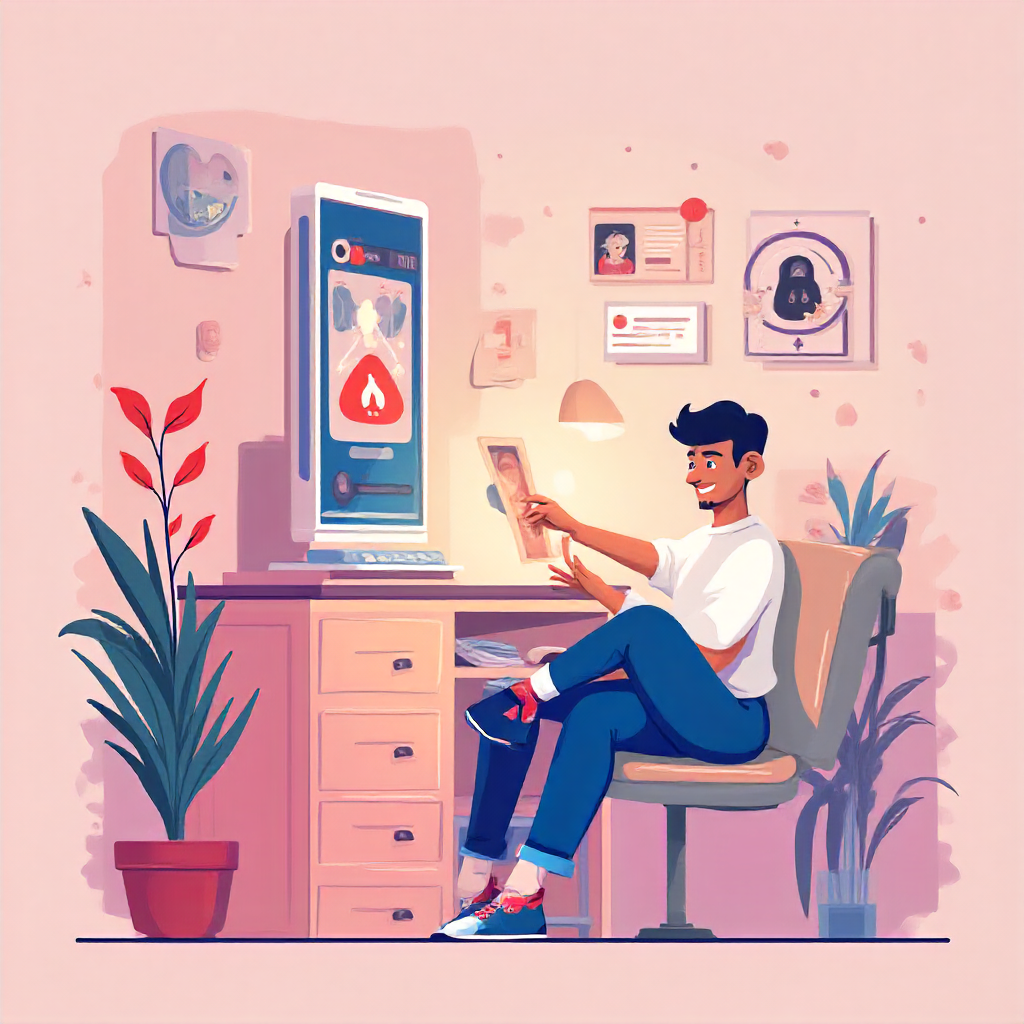NotebookLM Alternativein Social Media
PeakVis can actually watch, hear and analyze videos from social media. Watch as our AI learns your unique voice, humor, and style. Feed it viral content and let it reverse-engineer their success.
Get started
PeakVis can actually watch, hear and analyze videos from social media. Watch as our AI learns your unique voice, humor, and style. Feed it viral content and let it reverse-engineer their success.
Get started
AI Content Strategy
Need a good NotebookLM alternative? NotebookLM launched in July 2023, but most users still aren't familiar with it . The tool remains very limited when it comes to practical features . You can turn PDFs into dynamic podcast-style conversations , but many creators need more powerful tools to get their work done.
New NotebookLM competitors pop up every day . Saner.AI, Notion, and MyMind lead the pack as top alternatives in 2025 . AI note-taking tools keep getting better to serve different types of users, according to discussions on Reddit and other platforms. Saner.AI focuses on busy knowledge workers who juggle lots of information from multiple sources . PeakVis takes a different approach with its visual workspace. Creators can analyze viral content patterns and turn these insights into customized content that works for their audience. Let me show you why PeakVis might be the NotebookLM alternative you need.

Google's NotebookLM created quite a buzz during its launch, especially with its feature that turns uploaded content into podcast-like discussions between AI hosts. Regular users now look for notebooklm alternatives that better match their specific needs.
NotebookLM excels in several areas that drew users' attention. The system transforms documents, videos, and webpages into engaging audio overviews [1]. It also generates reliable outputs based on your uploaded sources, with citations you can verify [2]. Users find it helpful to understand complex subjects through briefs and study guides [2].
In spite of that, major drawbacks have surfaced:
The platform lacks customization options that creators need. Users can't personalize or connect notes within notebooks, and different notebooks work like separate folders [2]. Creators who need well-laid-out workspaces find these limitations frustrating.
Creators often describe NotebookLM's AI responses as "surface-level" without depth. They compare it to "having an intern who read your notes once, got distracted, and then tried to fake it through the meeting" [1]. This becomes especially troublesome with complex content.
Format issues add to these frustrations. Users can't upload certain PDFs or Excel sheets due to compatibility problems [1]. This creates a major workflow obstacle for research-focused creators who work with multiple file formats.
The tool doesn't remember context between sessions, so users must input the same information repeatedly [1]. This repetitive task becomes tedious for ongoing projects or series. Without internet connection, your "intelligent" tool becomes completely unavailable [1].
Reddit and forum users share creative solutions but acknowledge the tool's basic limitations. A Reddit user mentioned using NotebookLM with advanced language models: "I always use another advanced llm eg gem 2.5 pro or gpt5 just to ensure reliability as llm of nblm is not too smart in analysis" [4].
Professional content creators often call the application's casual tone and fixed voices "showstoppers" [1]. Users worry about the AI adding content beyond the original documents [1], which could make their work inaccurate.
December 2024 saw NotebookLM's "Interactive Mode" receive negative feedback when users noticed AI hosts seemed annoyed by interruptions, responding with comments like "I was getting to that" [1]. This issue got fixed, but it shows the tool needs more refinement.
Tools like PeakVis now analyze psychological patterns of viral content while keeping a creator's authentic voice. This leads many creators to explore these notebooklm alternatives for their content needs.

PeakVis stands apart from regular AI note-taking tools. The platform completely changes how creators work with their content. Most platforms focus on text, but PeakVis takes a visual approach that matches creative minds' natural workflow.
The platform provides a groundbreaking canvas-style interface. Creators can organize their thoughts, resources, and AI interactions in ways that mirror their creative process [5]. Users can break free from the linear note-taking limits that other NotebookLM alternatives set.
Creators can spot connections between content pieces they might miss otherwise with the platform's adaptable workspace [5]. Users get a complete view of their campaigns and projects by grouping related materials and creating mind maps for content strategies. This broader view helps them spot patterns in seemingly unrelated content.
The easy-to-use interface came from solid research. PeakVis grew from academic studies where researchers looked at visual analysis of audiovisual narratives in streaming data [6]. They matched video recordings with responsive line graphs showing audience engagement metrics, which proved how powerful visual analysis could be for understanding content [7].
PeakVis breaks down viral content's psychological elements in a unique way. The platform looks at viral content through multiple lenses:
Research shows high emotional arousal predicts viral content best, whether the emotions are positive or negative [8]. PeakVis uses this evidence to find emotional patterns in successful content.
The platform works like an automated system. It watches viral content on major platforms and builds step-by-step guides to recreate that success [3]. Creators can follow proven blueprints from posts with millions of views instead of guessing what works [3].
PeakVis stands out from other NotebookLM alternatives by creating content that sounds authentic. The AI learns your style, including your humor, catchphrases, and speaking rhythm.
Regular AI writing tools create robotic content, but PeakVis studies your past content to find your "content DNA" [5]. The platform learns how you build arguments, tell stories, and adds your personality quirks.
This solves a big problem creators face today - AI-generated content usually sounds artificial [2]. One content creator mentioned that most AI tools make content that sounds like "AI wrote it" rather than keeping the creator's real style.
The system works simply: give PeakVis your best content so it learns your patterns and voice. When you need a script about any topic, it mixes your authentic voice with proven viral patterns to create content that sounds like you but performs like top creators [5].
PeakVis brings a fundamental change from guessing what content might work to applying proven success principles [2]. The platform transforms content planning, organization, and creation with an approach built for today's visual-first, psychology-driven digital world.

The AI tool market today is packed with options. Your workflow needs and content creation style will help you pick the right NotebookLM alternative that works best for you.
NotebookLM shines as a source-grounded tool that references only materials you upload. This reduces hallucinations that plague other AI systems [9]. The platform's standout feature, Audio Overviews, turns documents into podcast-style summaries—a capability that other tools can't match [10].
PeakVis takes a completely different path. The platform doesn't just organize information. It breaks down the psychology behind viral content visually. PeakVis analyzes what makes successful videos tick and turns these findings into practical strategies. The platform lets you keep your authentic voice and speaking style when creating content, unlike NotebookLM's limited voice options.
Notion guides the pack as a flexible workspace that combines notes, tasks, and wikis with AI help. You can turn it into anything from a simple planner to a complete life operating system—that's its strength [11]. PeakVis narrows its focus to content strategy and creation instead of general organization.
Saner.AI brands itself as an AI Second Brain to organize "everything that matters" [11]. The platform excels at gathering thoughts, emails, and tasks in one spot with automatic organization and summarization [11]. Saner.AI targets general productivity while PeakVis digs deep into content psychology analysis.
Mem's strength lies in knowing how to remember things through AI-powered search and related content suggestions [12]. Quick captures work well here, but Mem doesn't have PeakVis's dedicated content strategy tools and visual workspace features.
Tools in 2025 show clear specializations. Obsidian attracts privacy-conscious users with its local storage of markdown files and powerful linking features [1]. Evernote stays strong by offering cross-platform sync and robust search with optical character recognition [1].
Nouswise might be the closest full replacement for NotebookLM. It offers similar podcast features and document querying with citations [1]. Perplexity AI works well as a real-time research companion through its conversational search engine approach [1].
PeakVis creates its own space in this landscape. The focus on visual content analysis and strategy sets it apart from text-focused competitors. Its visual intelligence system, content DNA analysis, and 30-minute creation system solve problems that other NotebookLM alternatives don't deal very well with.

PeakVis's visual approach has creators switching from traditional NotebookLM alternatives in droves. The numbers tell an amazing story: 10,000+ active creators, 50M+ views generated, and a 95% success rate with just 30 minutes average creation time [5].
YouTube creator Marcus Rodriguez (890K subscribers) revolutionized his content strategy with PeakVis's reverse-engineering tools. "The 30-minute system is insane. I went from spending days on scripts to creating viral content in 30 minutes. My last 5 videos all hit 500K+ views" [5]. PeakVis analyzes viral videos and finds the psychological triggers that make them successful.
Creators now copy proven formulas for viral video scripts that once needed hours of manual analysis. Each script uses strategic "viral loops" with three key parts: hooks that spark curiosity, tension that builds problems, and payoffs that solve conflicts while re-engaging viewers [13]. PeakVis makes this automatic so creators can generate scripts that sound like themselves.
Guesswork no longer drives content calendars. PeakVis users typically see their first viral video within 7 days and get 10x more views in their first week [4]. This quick success comes from PeakVis spotting current viral patterns in specific niches.
Sarah Chen grew her TikTok following from 50K to 2.3M in 8 months. She credits PeakVis's trend analysis: "I was stuck at 50K followers for months. PeakVis showed me exactly what my competitors were doing differently" [5].
PeakVis users show how each platform needs its own content strategy:
Marcus Rodriguez hits 500K+ views on every YouTube video [5]. He uses platform-specific hook patterns that grab attention in those first vital seconds.
Instagram influencer Emily Johnson boosted her engagement rate from 2% to 12% [5]. She learned both text patterns and visual techniques that make messages stick.
TikTok star Sarah Chen's explosive growth shows how PeakVis helps find algorithm-friendly content that builds followers fast [5].
Traditional content tools often miss the mark for ADHD creators' unique thinking styles. PeakVis's visual workspace matches how ADHD brains naturally work. Creators can:
These features help ADHD creators turn scattered thoughts into structured, high-performing content. They work with their brain's natural patterns instead of fighting them [14].

Want to create viral content without endless trial and error? PeakVis's 30-minute system gives you a clear path to success. Other NotebookLM alternatives don't match up since they lack visual content analysis capabilities.
Start by organizing visual groups of your best content alongside your competitors' viral hits on the PeakVis canvas [5]. Creative minds naturally process information this way, which helps spot patterns in seemingly different pieces. The platform looks at everything from hook structures to emotional triggers and shows you more than text-based tools can reveal.
Your content groups need to link with PeakVis's AI chat [5]. This connection lets the system spot relationships between different pieces and find what makes each one successful. X creators have found that posts with numbers or questions retain 75% more viewers [15]. PeakVis automatically spots these patterns in your sources.
The AI can generate a script on any topic you choose [5]. Your authentic voice blends with proven viral patterns to create content that sounds like you and performs like top competitors. The "refine in chat" feature helps adjust tone or pacing whenever needed [16]. You'll get a ready-to-film script that keeps your style while using elements that boost engagement.

Many creators looking for better NotebookLM alternatives have found PeakVis, which takes a unique visual-first approach to content creation. NotebookLM's audio overviews and source-grounded responses are useful, but they don't help creators who need deeper psychological insights into what makes content appeal to audiences.
PeakVis fills this gap by blending visual workspace features with viral content analysis. The tool breaks down successful content from different platforms and shows the emotional triggers and structural elements that boost engagement. This gives creators something that's nowhere near basic note-taking—it provides actual blueprints for viral success.
PeakVis stands out from NotebookLM and other tools like Notion or Saner.AI by preserving a creator's authentic voice. Instead of generating generic AI-content, the system learns your unique style and combines it smoothly with proven viral patterns.
The results speak for themselves. Creators on YouTube, TikTok, and Instagram have seen dramatic growth after using PeakVis's 30-minute content creation system. On top of that, creators with ADHD find the visual workspace helps them turn scattered ideas into structured, high-performing content.
Your specific needs will determine which NotebookLM alternative works best. All the same, if you're tired of guessing what might work and want to understand exactly why certain content succeeds, PeakVis is a chance worth exploring. Its mix of visual organization, psychological analysis, and authentic voice preservation makes it a powerful tool to cut through the noise and build a loyal audience.
While PeakVis is still in its early stages, it marks a radical alteration from random content experiments to informed creative strategies. Content creation's future isn't just about better organization—it's about understanding why audiences respond to certain patterns, and PeakVis puts that knowledge right in creators' hands.

While NotebookLM offers useful features like audio overviews, creators are seeking alternatives that provide deeper content strategy insights and visual organization capabilities.
PeakVis transforms content creation from guesswork into a data-driven strategy, helping creators understand exactly why certain content succeeds while maintaining their unique voice and style.

Q1. What makes PeakVis stand out from other NotebookLM alternatives?
PeakVis offers a unique visual workspace for content breakdown, reverse-engineers viral content psychology, and generates scripts in the creator's authentic voice. Unlike text-focused alternatives, it provides deeper insights into content strategy and viral patterns.
Q2. How does PeakVis help creators save time and improve their content?
PeakVis uses a 30-minute creation system that analyzes successful content across platforms, extracts key psychological elements, and helps creators generate viral-ready scripts while maintaining their unique style. This approach has led to significant view increases and rapid follower growth for many users.
Q3. Can PeakVis be used for different social media platforms?
Yes, PeakVis can be used for various platforms including YouTube, Instagram, and TikTok. It helps creators understand platform-specific strategies, such as hook patterns for YouTube, visual techniques for Instagram, and algorithm-friendly structures for TikTok.
Q4. How does PeakVis benefit creators with ADHD?
PeakVis's visual workspace aligns with how ADHD brains naturally function, helping creators stay focused by implementing a "Done is better than perfect" approach, eliminating distractions, and allowing for instant idea capture without losing focus.
Q5. What is the process of creating content with PeakVis?
The process involves three main steps: building content intelligence by visually organizing top-performing content, connecting the dots across sources using AI chat, and generating a script that combines the creator's authentic voice with proven viral patterns. This system allows creators to produce potentially viral content in about 30 minutes.

[3] - https://www.ghiless.com/p/the-ai-system-that-reverse-engineers-viral-content-while-you-sleep
[4] - https://www.viralscriptify.com/
[5] - https://peakvis.io/
[8] - https://superscale.ai/learn/what-is-viral-marketing-psychology-strategy-guide/
[9] - https://www.xda-developers.com/trying-notebooklm-competitors/
[10] - https://www.tomsguide.com/ai/forget-chatgpt-heres-why-notebooklm-is-better-for-team-projects
[11] - https://www.saner.ai/blogs/10-best-second-brain-ai-apps
[12] - https://www.saner.ai/blogs/10-best-mem-alternatives
[13] - https://www.linkedin.com/pulse/ep-1-how-write-viral-video-script-lisa-kostova-otgxe
[14] - https://buffer.com/resources/create-content-adhd/
[15] - https://searchlightsocial.com/go-viral-new-and-proven-system/